UPSC Daily Current Affairs: 20th November 2024 | Current Affairs & Hindu Analysis: Daily, Weekly & Monthly PDF Download
GS3/Environment
What is Cloud seeding?
Source:Times of India
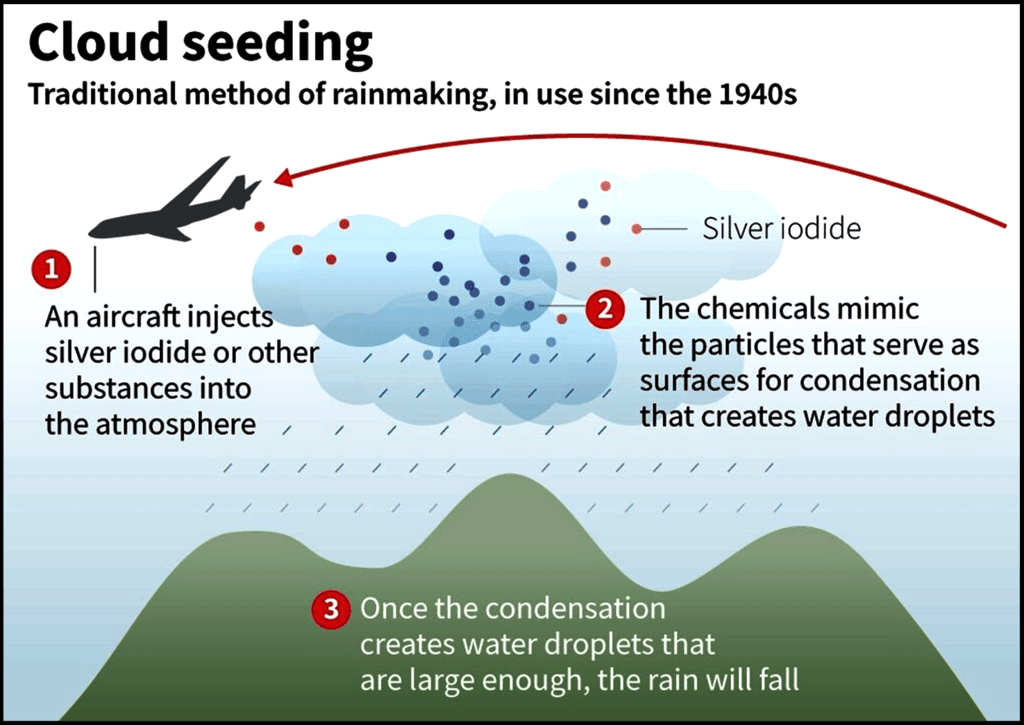
Why in News?
Recently, Delhi is grappling with severe air pollution, the concept of cloud seeding has emerged as a potential short-term solution to combat the hazardous air quality.
About Cloud seeding:
Cloud seeding, often referred to as artificial rain, is a technique used to modify weather conditions with the goal of increasing precipitation by adding certain substances to clouds.
How is it done?
- The fundamental science behind cloud seeding involves the dispersal of materials such as silver iodide, potassium iodide, or dry ice into clouds to promote the formation of rain or snow.
- These substances act as nuclei around which water droplets can form, potentially resulting in enhanced precipitation.
- The process can be executed using various methods, including aircraft, ground-based generators, or rockets in certain situations.
- Cloud seeding aims to increase the size of cloud droplets so that they become heavier and fall as rain due to gravity.
- In relation to air pollution, cloud seeding is viewed as a method to "wash away" airborne pollutants and particulate matter.
- The underlying theory is that increased rainfall can help settle dust and other airborne particles, leading to a temporary improvement in air quality.
Challenges:
- Effective cloud seeding requires appropriate atmospheric conditions, including the presence of clouds that contain sufficient moisture.
GS1/Indian Society
4B MOVEMENT
Source:Indian Express
Why in news?
The 4B movement, which originated in South Korea, gained significant attention in the wake of Donald Trump’s election victory. This led to many American women expressing their support for the movement through social media platforms.
The movement began in South Korea around 2016, initiated by the tragic murder of a woman in a subway station. The perpetrator claimed to have felt ignored by women, which coincided with a surge in reports from women regarding being secretly filmed by hidden cameras. This sparked a radical feminist movement that argues heterosexual relationships are fundamentally oppressive, advocating for women to liberate themselves from these traditional roles through a commitment to the "Four Nos": no dating, no sex, no marriage, and no childbearing.
- The term "4B" stands for four Korean words that translate to the refusal of heterosexual marriage (bihon), childbirth (bichulsan), romance (biyeonae), and sexual relationships (bisekseu).
- In the Indian context, marriage often comes with the burden of dowry, and women disproportionately bear the responsibilities of managing the household and raising children. Additionally, many women face workplace penalties related to motherhood, while intimate partner violence remains prevalent.
- Supporters of the 4B movement argue that as long as men do not actively contribute to creating a gender-just society, women should not reward them with love, children, or emotional labor.
- The movement encourages women to envision roles beyond those of wives and mothers, promoting independence and personal aspirations.
- Women who are not encumbered by domestic duties are believed to have the freedom to pursue their own goals and happiness, while also fostering solidarity among women.
Why is it gaining popularity in America now?
The movement is resonating in the United States, particularly after the Supreme Court's decision to overturn Roe v. Wade in 2022, which revoked the constitutional right to abortion. By November of that year, 21 states had implemented bans or restrictions on abortion services.
In response, pro-Trump social media influencers promoted a misogynistic campaign labeled "Your body, My choice," which undermines feminist principles by normalizing rape and forced pregnancies. This backlash against women’s rights has fueled the relevance of the 4B movement as a form of resistance.
Why do some non-sexist people also oppose 4B?
- Critics argue that completely severing ties with men places the responsibility for change solely on women, rather than demanding accountability from men.
- There is concern that viewing men as incapable of reform perpetuates harmful stereotypes, such as the "boys will be boys" mentality. Meaningful change is believed to arise from awareness and responsibility fostered within relationships.
- Some believe that movements like 4B can exclude discussions on transgender rights and may deny women the choice to pursue motherhood or sexual relationships despite frustrations with inequality.
GS2/Governance
Bharat National Cyber Security Exercise (Bharat NCX 2024)
Source:Nagaland Tribune

Why in news?
The Bharat National Cyber Security Exercise (Bharat NCX 2024) was inaugurated at a high-profile ceremony organized by the National Security Council Secretariat (NSCS) in collaboration with Rashtriya Raksha University (RRU) in New Delhi recently.
About Bharat NCX 2024:
- This initiative aims to enhance India's cybersecurity resilience.
- Conducted by the National Security Council Secretariat (NSCS) in partnership with Rashtriya Raksha University (RRU).
- It serves as a collaborative platform uniting over 300 participants, including representatives from various government agencies, public organizations, and the private sector, all dedicated to protecting critical information infrastructure.
- The event includes training sessions, live-fire simulations, and strategic exercises.
Key Features:
- The exercise includes hands-on training focused on cyber defense and incident response.
- Live-fire simulations will replicate cyberattacks on both IT and operational technology (OT) systems.
- Collaborative platforms will be established for both government and industry stakeholders to enhance collective cyber defense efforts.
Strategic Decision-Making Exercise
- This component will gather senior management from various sectors to practice decision-making during a simulated national-level cyber crisis.
- The goal is to improve their skills in responding effectively in high-stress situations.
CISO’s Conclave
- This section will host Chief Information Security Officers from government, public, and private sectors.
- Participants will share insights, engage in panel discussions, and explore the latest trends and initiatives in cybersecurity.
Bharat Cybersecurity Startup Exhibition
- A special exhibition will showcase innovative solutions developed by Indian startups.
- This emphasizes the crucial role these startups play in strengthening the nation’s cybersecurity framework.
- The exercise promotes leadership engagement and capacity building among stakeholders.
- It aims to foster a unified approach in addressing emerging cyber challenges.
GS3/Environment
SUDAN
Source:The Hindu
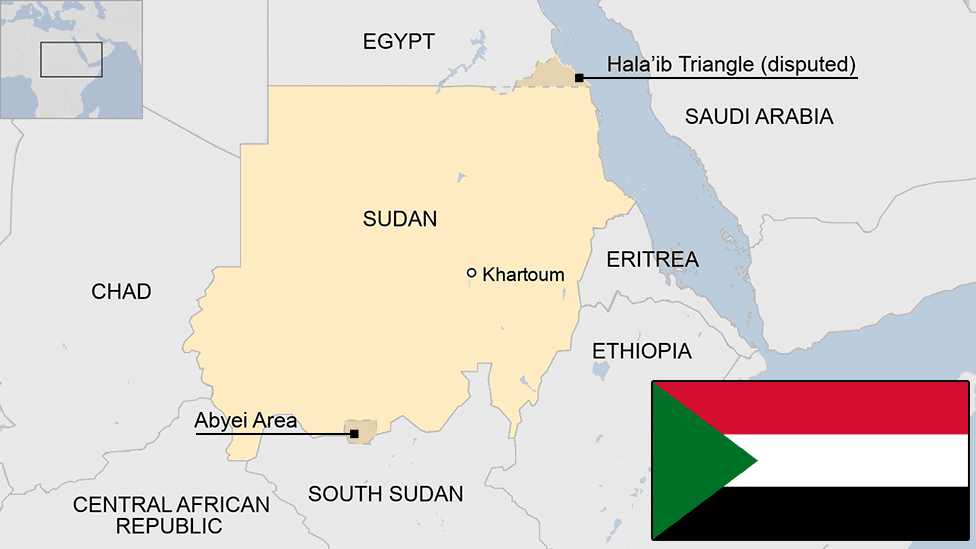
Why in news?
Russia recently blocked a United Nations resolution that called for an immediate ceasefire in the ongoing conflict between Sudan’s military and paramilitary forces, which has led to a humanitarian crisis affecting millions. The conflict in Sudan began in April 2023, ignited by longstanding tensions between military and paramilitary leaders, escalating violence in Khartoum and spreading to regions like western Darfur, which has a history of significant bloodshed since 2003.
Geographical Location
- Sudan is situated in northeastern Africa.
- Bordered by Egypt to the north, the Red Sea to the northeast, Eritrea and Ethiopia to the east, South Sudan to the south, the Central African Republic to the southwest, Chad to the west, and Libya to the northwest.
Capital and Major Rivers
- Capital: Khartoum
- Key Rivers: The Blue Nile and the White Nile converge in Khartoum.
Historical Context
- Colonial Administration: Sudan was jointly governed by Egypt and Britain from 1899 until it gained independence in 1956.
- Independence: Achieved from Anglo-Egyptian rule in 1956.
- Civil Wars: The nation has faced two significant civil wars, the first from 1955-1972 and the second from 1983-2005.
- South Sudan's Independence: In 2011, South Sudan separated from Sudan, becoming an independent nation.
Economic Overview
- Main Industries: The economy relies heavily on agriculture, livestock, oil, and minerals.
- Economic Challenges: Sudan struggles with high inflation, unemployment, and the impact of ongoing conflicts.
Cultural Aspects
- Languages: Arabic is the official language, alongside many local dialects.
- Religion: The predominant religion is Islam, with Christianity and indigenous beliefs also practiced.
Conflict in Darfur
- The War in Darfur, known as the Land Cruiser War, began in 2003 when rebel groups opposed the Sudanese government, alleging oppression of the non-Arab population in Darfur.
- Government Response: The government retaliated with a campaign of ethnic cleansing against non-Arab groups, leading to the deaths of hundreds of thousands and resulting in the indictment of former president Omar al-Bashir for genocide and war crimes by the International Criminal Court.
GS2/International Relations
A thousand days of Ukrainian resilience
Source:The Hindu
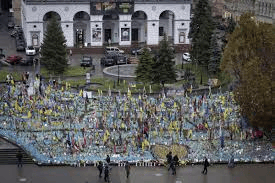
Why in news?
Exactly 1,000 days ago, world history took a dramatic turn when Russia initiated a full-scale military invasion with the goal of eradicating Ukrainian statehood, culture, and nationhood.
Ukraine has demonstrated remarkable resilience against Russian aggression since the full-scale invasion began on February 24, 2022. Key factors contributing to this resilience include:
- National Unity: The unification of the Ukrainian people under President Volodymyr Zelenskyy has been crucial. This collective spirit has galvanized both military and civilian efforts to resist Russian advances, leading to significant victories such as the defense of Kyiv and the liberation of the Kharkiv and Kherson regions.
- Military Strength: Throughout the conflict, the Ukrainian armed forces have transformed into one of the strongest military forces globally. Their ability to repel invaders and conduct successful counteroffensives has been widely recognized and admired internationally.
- International Support: Ukraine has received substantial military, financial, and humanitarian aid from allies worldwide. This support has been instrumental in sustaining its defense efforts and rebuilding initiatives.
- Cultural and Moral Resolve: The war has fostered a strong sense of identity among Ukrainians, who view their struggle as not only for survival but also for European values and democracy. This moral clarity strengthens their resolve against oppression.
What are the human and economic costs of the conflict for the whole world?
- Human Costs: Thousands of civilians, including 600 children, have died. Over eight million people have left Ukraine, and 3.6 million are still displaced. Russia has taken more than 20,000 children, many of whom are still missing or in captivity.
- Economic Costs: Ukraine has lost over $400 billion, and it will need $500 billion to rebuild and $35 billion to clear landmines. The war has affected global supply chains and caused inflation worldwide.
How can Ukraine in seeking peace and rebuilding?
- Diplomatic Efforts: Ukraine continues to engage in diplomatic initiatives aimed at securing international support for its sovereignty and territorial integrity. President Zelenskyy emphasizes that neutrality is not an option; countries must choose sides in this conflict.
- Reconstruction Plans: As rebuilding begins, Ukraine aims to restore its infrastructure while implementing reforms that demonstrate resilience and commitment to democratic values. This effort is supported by international partners who provide financial assistance.
- Cultural Restoration: Protecting cultural heritage is a priority, with initiatives underway to restore damaged institutions and memorialize those lost during the conflict. This cultural revival is integral to national identity and unity moving forward.
What opportunity does India have from this conflict?
- Strengthening Diplomatic Influence: India can play a key role in diplomatic efforts by supporting Ukraine’s sovereignty and promoting peace talks, which enhances its global standing as a peacebuilder.
- Economic and Trade Opportunities: As Ukraine seeks reconstruction, India can explore investment and trade opportunities in rebuilding efforts, especially in sectors like infrastructure, agriculture, and technology.
- Cultural and Educational Collaboration: India can collaborate with Ukraine in preserving cultural heritage and restoring educational institutions, fostering cultural exchanges and strengthening bilateral ties.
Mains PYQ:
What is the significance of Indo-US defence deals over Indo-Russian defence deals? Discuss with reference to stability in the Indo-Pacific region.
GS2/Governance
Implications of SEBI's New Framework for Equity Derivatives
Source:Indian Express

Why in News?
The Securities and Exchange Board of India (SEBI) has implemented six significant reforms aimed at improving the framework for equity derivatives, commonly known as equity futures and options (F&O). Three of these measures will take effect on November 20, 2024, while the others are scheduled for implementation in 2025.
Meaning:
Equity derivatives are financial instruments that gain their value from the price fluctuations of an underlying asset, such as a stock. They are vital for risk management, speculation, and portfolio optimization, enabling traders to participate in equity markets without the need to directly own the underlying assets.
Types:
- Futures contracts: Agreements that bind buyers and sellers to transact an underlying equity asset at a set price and date. For example, BSE S&P futures and Nifty IT futures are popular contracts.
- Options: Contracts that provide the holder with the right, but not the obligation, to buy (call option) or sell (put option) an asset at a specified price before or on the expiration date.
- Swaps: Contracts wherein parties exchange cash flows based on the returns of an underlying equity asset, typically used for hedging or investment purposes.
- Forwards: Similar to futures but are non-standardized and traded over the counter (OTC), providing more flexibility but also increased risk.
Changes Effective from November 20, 2024:
- Recalibration of contract size for Index derivatives: The minimum contract size for index futures will rise to ₹15-20 lakh from the existing ₹5-10 lakh. This aims to ensure that participants engage in manageable risk levels while trading derivatives.
- Impact: Retail traders, who constitute 40% of F&O trades, might struggle due to increased capital requirements. Conversely, institutional players, who make up 60% of turnover, are expected to compensate for the liquidity shortfall. Smaller investors will experience reduced risk exposure, thereby minimizing potential losses.
- Rationalisation of weekly Index derivatives products: Each stock exchange will now be permitted to offer weekly expiry derivatives for only one benchmark index. This change aims to limit speculative trading, particularly on expiry days when options premiums are lower, thus reducing opportunities for uncovered or naked options selling.
- Increased tail-risk coverage on expiry days: An additional 2% Extreme Loss Margin (ELM) will be applied to short-options contracts on expiry days to mitigate risks associated with heightened speculative activities and sharp price movements. This may discourage aggressive trading and is expected to lower extreme volatility, which has historically resulted in significant retail account losses exceeding ₹1,000 crore on peak expiry days.
Changes to be Effective in 2025:
- Upfront collection of options premium (Effective Feb 1, 2025): Trading and clearing members must collect the options premium upfront to avert undue leverage, discouraging positions that exceed available collateral and promoting responsible trading practices.
- Intraday monitoring of position limits (Effective April 1, 2025): Exchanges will be required to monitor permissible position limits throughout the day to prevent excessive trading volumes and manage risks from unidentified intraday positions that may exceed regulatory limits.
- Removal of calendar spread treatment on expiry day (Effective February 1, 2025): The benefits of calendar spreads will no longer apply to contracts expiring on expiry day. This adjustment aims to minimize basis risk and preclude price distortions caused by rollovers and speculative trading.
Conclusion:
SEBI’s updated framework for equity derivatives is designed to diminish speculative trading, safeguard retail investors, and bolster market stability. Although the increased margin requirements and streamlined contracts may temporarily impact retail participation, these strategies are intended to create a more sustainable and secure trading environment in the long term.
GS3/Science and Technology
Binar Space Program
Source:Business Today
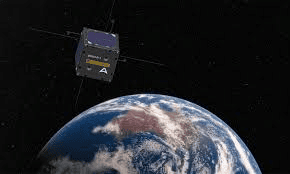
Why in news?
Recently, three small satellites from Curtin University's Binar Space Program disintegrated upon entering Earth's atmosphere due to increased solar activity.
About Binar Space Program:
- The Binar Space Program is a satellite research initiative based at Curtin University.
- Its primary goal is to enhance our knowledge of the Solar System and to simplify the processes involved in operating space missions.
- The program commenced with its first satellite, Binar-1, which was launched in September 2021, during a period of relatively low solar activity.
- Binar-1, a ten-centimeter cube satellite, successfully orbited Earth for 364 days from an altitude of 420 km.
- The subsequent missions, Binar-2, Binar-3, and Binar-4, consisted of similarly sized CubeSats designed to last around six months, taking into account the increased solar activity due to deployable solar arrays.
- However, these satellites faced an unexpected fate as high solar activity led to their premature destruction in the atmosphere.
What is solar activity?
- Solar activity encompasses various phenomena such as sunspots, solar flares, and solar wind, which is the flow of charged particles towards Earth.
- This activity is driven by the Sun's fluctuating magnetic field, which undergoes a complete reversal approximately every 11 years.
- The peak of this cycle is characterized by heightened solar activity.
- Recent observations indicated that solar activity levels were significantly higher than anticipated for this stage of solar cycle 25.
Impacts:
- Increased solar activity results in more frequent solar flares and stronger solar winds, which can disrupt electronic systems on satellites.
- It also leads to heightened ionizing radiation exposure for astronauts and airline pilots, along with potential interference in long-distance radio communications.
- For satellites in low Earth orbit, heightened solar activity causes the outer atmosphere to expand due to extra energy absorption.
- This expansion significantly increases atmospheric drag on satellites operating below 1,000 km, which can alter their orbits and pull them closer to Earth's surface.
- Key satellites affected by this phenomenon include the International Space Station and the Starlink constellation, which utilize thrusters to mitigate these effects; however, the adjustments can be costly.
What is Space weather?
- Space weather refers to the environmental conditions that originate from outside Earth's atmosphere, primarily influenced by the Sun.
- This phenomenon can have both noticeable and subtle effects on Earth.
- Particularly, space weather and solar activity pose additional challenges for satellites and their operators.
GS3/Environment
Sathyamangalam Tiger Reserve
Source: The Hindu

Why in News?
An initiative taken by the Forest Department to conduct evening coaching classes for school children in 10 tribal hamlets located within the Sathyamangalam Tiger Reserve (STR) has significantly enhanced their learning skills.
About Sathyamangalam Tiger Reserve:
- Location: Situated at the confluence of the Eastern and Western Ghats within the Nilgiri Biosphere Reserve, in the Erode District of Tamil Nadu.
- Connectivity: It is adjacent to the Mudumalai Tiger Reserve and Bandipur Tiger Reserve (Karnataka), as well as the BR Tiger Reserve and Wildlife Sanctuary (Karnataka).
- Biosphere Landscape: These reserves collectively form the Nilgiris biosphere landscape, which boasts the largest tiger population globally, exceeding 280 tigers.
- Terrain: The region features hilly and undulating landscapes, with altitude varying from 750 meters to 1649 meters.
- Vegetation: The area is characterized by diverse ecosystems including southern tropical dry thorn forests, mixed deciduous forests, semi-evergreen forests, and riparian forests.
- Climate: The climate is subtropical and dry. Summers can be hot and dry, while monsoons bring wet and cooler conditions, occasionally resulting in river flooding.
- Rivers: Key rivers in the vicinity include the Bhavani, Moyar, and Noyyal.
- Tribal Communities: The reserve is inhabited by several indigenous tribes, notably the Irula and Kurumba.
- Flora: The region supports a variety of plant species including Albizia amara, Chloroxylon swietenia, Gyrocarpus jacquini, Neem, Tamarind, Sandalwood, Randi dumetorum, Zizyphus, among others.
- Fauna: Prominent wildlife species include elephants, tigers, panthers, sloth bears, gaur, black bucks, spotted deer, wild boars, black-naped hares, common langurs, Nilgiri langurs, striped-neck mongooses, and bonnet macaques.
GS3/Economy
Small and Medium Enterprises (SMEs)
Source: Times of India

Why in News?
Small and medium enterprises (SMEs) in India are businesses that fall under the categories of small-scale industrial (SSI) or medium-scale industrial units. They are crucial to the Indian economy and are classified based on their annual turnover and investment in equipment and plants.
Characteristics of SMEs:
- Classification
- Micro Enterprises: Investment up to ₹1 crore and turnover up to ₹5 crore.
- Small Enterprises: Investment up to ₹10 crore and turnover up to ₹50 crore.
- Medium Enterprises: Investment up to ₹50 crore and turnover up to ₹250 crore.
- Diverse Sectors: SMEs operate in various sectors including manufacturing, retail, IT, textiles, and more, playing a significant role in rural industrialization.
- Scalability: SMEs frequently serve as ancillary units, providing supplies to larger industries and fostering entrepreneurship.
Key Statistics:
- Contribution to GDP: SMEs contribute approximately 30% to India’s GDP.
- Exports: SMEs account for nearly 48% of India's total exports.
- Employment: They provide jobs for over 110 million people across urban and rural areas.
- Number of Enterprises: Over 63 million registered SMEs are operating in India.
Challenges:
- Access to Finance: SMEs face limited funding options and high borrowing costs.
- Technology Adoption: There is low penetration of advanced technologies in SMEs.
- Regulatory Compliance: SMEs deal with complex procedures and frequent policy changes.
- Global Competition: They often struggle to compete with larger industries and international players.
Government Support:
- Schemes and Initiatives:
- MSME Samadhan: This initiative resolves payment issues faced by MSMEs.
- Prime Minister’s Employment Generation Programme (PMEGP): Encourages entrepreneurship among new ventures.
- Credit Guarantee Fund Scheme for Micro and Small Enterprises (CGTMSE): Provides collateral-free loans to micro and small enterprises.
- Production Linked Incentive (PLI) Scheme: Supports the manufacturing sector among SMEs.
- Digital Platforms:
- Udyam Registration: Simplifies the registration process for SMEs.
- TReDS (Trade Receivables Discounting System): Aids in improving cash flow management for SMEs.
News Summary:
SEBI has proposed new guidelines aimed at making SME Initial Public Offerings (IPOs) safer for investors. The changes are intended to enhance compliance, reduce risks, and improve transparency in the SME IPO segment, which has witnessed increased retail participation in recent years.
Key Proposals:
- Minimum IPO Size: Introduction of a minimum IPO size of ₹10 crore, replacing the previous lack of a minimum requirement.
- Hike in Application Size: The minimum IPO application size will increase to ₹4 lakh from the current ₹1 lakh.
- Promoter Restrictions: The sale of promoter shares will be limited to 20% of the issue size during the IPO.
- Profitability Requirement: SMEs must demonstrate a minimum operating profit of ₹3 crore in two out of the three years preceding the filing of IPO documents.
- Disclosure and Monitoring:
- IPO offer documents must be publicly available for at least 21 days prior to listing.
- A compliance monitoring agency will oversee the use of funds raised through IPOs.
- SMEs are required to disclose quarterly results and shareholding patterns, similar to larger listed companies.
Rationale Behind the Changes:
These measures are a response to concerns regarding inflated valuations, misutilization of funds, and investor losses within the SME segment. SEBI's proposals aim to protect smaller retail investors and ensure the SME market remains healthy and trustworthy.
GS3/Environment
Salt Chimneys discovered in the Dead Sea
Source: Forbes

Why in news?
Researchers have identified unique salt chimneys on the Dead Sea floor.
Key Facts about the Dead Sea:
- Location:
- Situated between Jordan and Israel, with the eastern shore in Jordan and the western shore in Israel.
- The southern half of the western shore is in Israel, while the northern half is in the West Bank.
- Divided by the Al-Lisan peninsula into two basins: a deep northern basin (400 m) and a shallow southern basin (< 3="" />
- Geographical Features:
- It lies 430.5 meters below sea level, making it the lowest land-based feature on Earth.
- Length: 50 km, Width: 15 km at its widest point.
- Surrounded by the Judaea hills (west) and Transjordanian plateaus (east).
- Salinity and Density:
- Salinity is 34.2%, almost ten times saltier than regular seawater, ranking it as the fourth saltiest body of water globally.
- Density of 1.240 kg/L allows people to float easily.
- Inlets and Outlets:
- Main inlet is the Jordan River.
- No natural outlet; water primarily evaporates leading to high salinity.
- Due to extreme salinity and harsh climatic conditions, life is limited to algae and microorganisms.
- About the Salt Chimneys:
- Salt chimneys are tall, chimney-like structures composed of crystallized salt, recently found on the Dead Sea floor by researchers from the Helmholtz Centre for Environmental Research (UFZ) during an underwater survey.
- These structures vary in height from 1 to over 7 meters.
- Formation Process:
- Groundwater from surrounding aquifers dissolves halite (salt) in old salt deposits around the Dead Sea basin, carrying it as brine.
- Despite being saline, this brine is less dense than the surrounding Dead Sea water due to its high salinity, causing it to rise as a plume from the lake bed.
- Upon contact with the colder water of the Dead Sea, the brine crystallizes rapidly, forming chimney structures that can grow several centimeters each day.
- Potential Role in Sinkhole Forecasting:
- In recent decades, numerous sinkholes have appeared around the Dead Sea; understanding the formation of salt chimneys could help in preventing future collapses in susceptible areas.
- Researchers have correlated the formation of these chimneys with underground cavities, which often precede sinkholes.
- The locations of these chimneys may assist in predicting high-risk areas for sinkhole formation, providing a method for monitoring and mitigating potential hazards.
GS3/Science and Technology
ONE DAY ONE GENOME INITIATIVE
Source:PIB

Why in news?
The Department of Biotechnology (DBT) along with the Biotechnology Research and Innovation Council (BRIC) has introduced the 'One Day One Genome' initiative. This initiative is spearheaded by BRIC in partnership with the National Institute of Biomedical Genomics (NIBMG), which operates under the DBT.
The 'One Day One Genome' Initiative is a groundbreaking project aimed at tapping into India's extensive microbial diversity.
Objectives:
- Microbial Exploration: To investigate and highlight India's distinct microbial species and their contributions to agriculture, environmental sustainability, and human health.
- Genomic Data: To ensure that genomic data is freely accessible to the public, thereby encouraging scientific collaboration and engaging the community.
- Innovation: To spark discussions, inspire research endeavors, and drive innovations that have practical applications.
- Key Features:
- Genome Sequencing: The initiative includes sequencing the genomes of bacterial species found in India, which reveals their genetic structure and potential uses.
- Public Accessibility: Complete annotated bacterial genomes will be made publicly accessible, accompanied by graphical summaries, infographics, and details about genome assembly.
- Significance:
- Environmental Protection: Research in this domain can enhance strategies for environmental conservation and management.
- Agricultural Development: It has the potential to improve agricultural practices by increasing nutrient cycling, enhancing soil fertility, and optimizing pest management.
- Human Health: The initiative aims to boost human health by supporting digestive health, enhancing immune function, and promoting mental well-being.
GS2/International Relations
Is Imposing Tariffs on Chinese imports a good idea?
Source:The Hindu
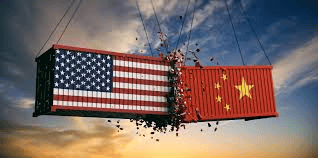
Why in News?
Following the recent U.S. elections, President Donald Trump has proposed imposing tariffs of up to 60% on imports from China and 10% on those from the EU. This move aims to address the U.S.-China trade deficit and counter perceived unfair subsidies from China.
What are the economic impacts of imposing tariffs on Chinese imports?
- Increased Domestic Prices: Tariffs elevate the price of imported goods, resulting in higher costs for U.S. consumers, which may contribute to domestic inflation, especially if tariffs are applied broadly across consumer products.
- Impact on Trade Deficit: While tariffs might help in reducing the trade deficit by discouraging imports, they could also lead to increased production costs domestically, which may not entirely offset the higher prices faced by consumers.
- Shifts in Consumption: Tariffs may lead consumers to prefer domestically produced goods over imports. This shift could support local industries and potentially increase domestic supply, helping to manage inflation if production can meet demand.
- Global Trade Relations: Implementing tariffs can provoke retaliatory actions from affected nations, potentially initiating trade wars that disrupt global supply chains and negatively influence international trade relations.
How might China respond to increased tariffs?
- Retaliatory Tariffs: Historically, China has retaliated by imposing tariffs on U.S. goods in response to American tariffs, often targeting products from politically sensitive areas or sectors in the U.S. to maximize political impact.
- Currency Manipulation: China might allow the yuan to depreciate, making its exports more affordable and countering the effects of U.S. tariffs.
- Increased Domestic Support: The Chinese government could introduce fiscal stimulus measures to support domestic industries affected by U.S. tariffs, which may include subsidies for exporters and incentives to boost local production.
- Diversification of Trade Partners: China may seek to diversify its trade by strengthening relationships with other nations and engaging in regional trade agreements that exclude the U.S., thereby reducing reliance on American markets.
Do tariffs achieve their intended goals?
- Trade Balance Improvement: While tariffs are intended to enhance the trade balance by decreasing imports, their success depends on consumer behavior and the ability of domestic producers to meet demand without significant price increases.
- Political Ramifications: Retaliation from China could undermine the anticipated benefits of tariffs, leading to a cycle of escalation that might harm both economies. Additionally, the political fallout from these actions could influence U.S. domestic politics, especially if crucial industries are negatively impacted.
- Long-Term Economic Impact: The long-term economic effects may be limited if countries like China successfully adapt via currency adjustments or by finding alternative markets for their goods.
How can India benefit from it?
- Market Diversification: India has the opportunity to capture U.S. market share by exporting goods as American consumers look for alternatives to Chinese products.
- Supply Chain Shift: India can attract businesses relocating production from China, taking advantage of its manufacturing policies and workforce.
- Boost in FDI: Increased tensions between the U.S. and China may lead to a rise in Foreign Direct Investment in India as firms seek to diversify their investment locations.
Way forward:
- Strengthen Manufacturing and Exports: Enhance domestic production capabilities through initiatives like the Production-Linked Incentive (PLI) scheme and focus on exporting goods in demand from the U.S., such as electronics, textiles, and pharmaceuticals.
- Attract Global Investments: Improve the ease of doing business in India, provide tax incentives, and position India as a dependable alternative to China for global supply chains and FDI.
Mains PYQ:
The USA is facing an existential threat in the form of China, that is much more challenging than the erstwhile Soviet Union. Explain.
|
38 videos|5288 docs|1117 tests
|





















